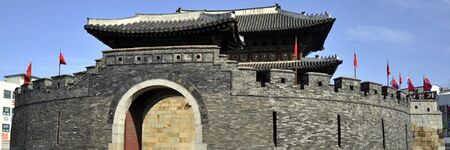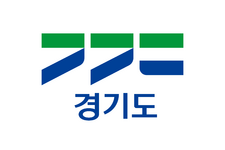Gyeonggi: Difference between revisions
Jump to navigation
Jump to search
No edit summary |
No edit summary |
||
| Line 2: | Line 2: | ||
|image=Hwaseongfortress-Suwon.jpg | |image=Hwaseongfortress-Suwon.jpg | ||
|image_caption=Hwaseong Fortress | |image_caption=Hwaseong Fortress | ||
|image_seal= | |image_seal=Flag of Gyeonggi Province, South Korea.svg.png | ||
|municipality=Province | |municipality=Province | ||
|established=1018 | |established=1018 | ||
Latest revision as of 07:30, June 13, 2022
- Members
Gyeonggi-do is the most populous province in South Korea. Its name, Gyeonggi, means "京(Seoul)畿(the area around Seoul)". Thus, Gyeonggi-do can be translated as "Seoul and the surrounding areas of Seoul". Seoul, the nation's largest city and capital, is in the heart of the area but has been separately administered as a provincial-level special city since 1946. Incheon, the nation's third-largest city, is on the coast of the province and has been similarly administered as a provincial-level metropolitan city since 1981. The three jurisdictions are collectively referred to as Sudogwon and cover 11,730 km2 (4,530 sq mi), with a combined population of 25.5 million—amounting to over half of the entire population of South Korea.
Activities

|
Gyeonggi Provincial virtual power plant in Gyeonggi Open Platform for Smart city | |
This is a project concept which is to create citizen-led, decentralized, local energy-based society that builds foundations on which the distributed resources (ESS, solar power) in the region that can proliferate profitable models which citizens invest, own, trade and operate.
| ||

